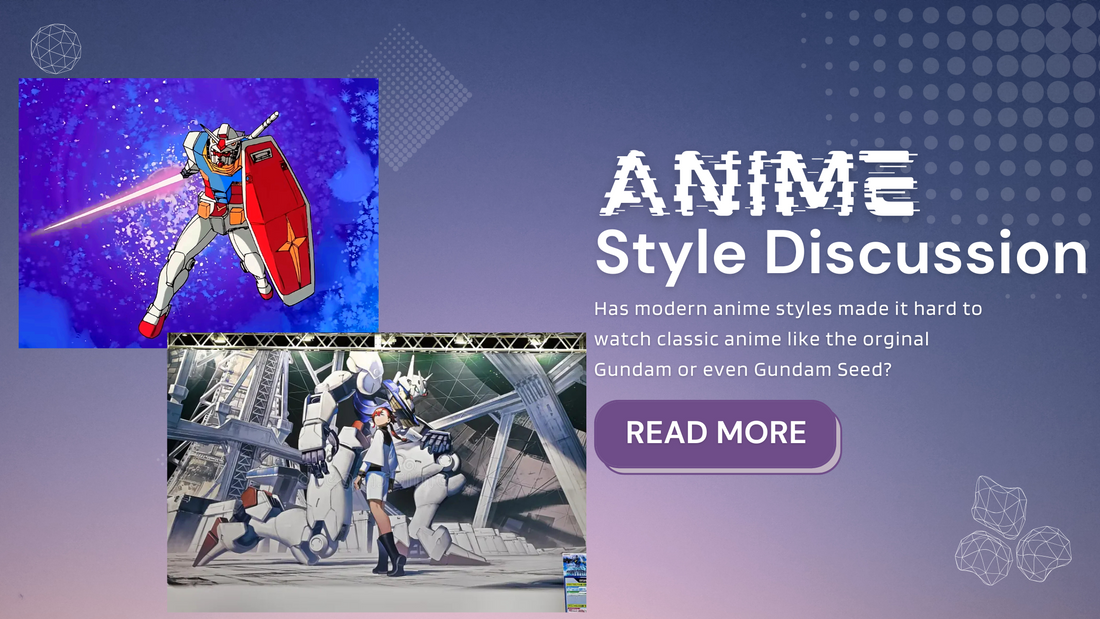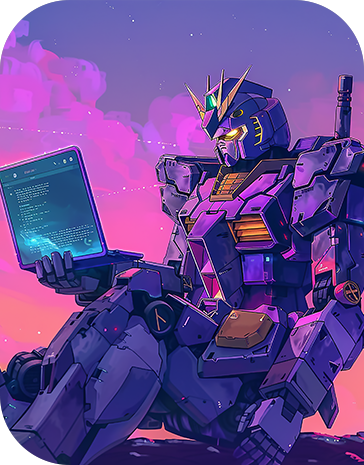The evolution of anime over the past few decades has been marked by significant advancements in animation technology, storytelling techniques, and visual aesthetics. Modern anime often showcases high-definition graphics, fluid animations, and contemporary character designs that cater to current audience preferences. This shift raises an intriguing question: Has the modern anime style impacted viewers' ability to appreciate classic series such as the original Mobile Suit Gundam released in 1979?
The Visual Evolution of Anime
Anime in the late 20th century, including the original Gundam series, was produced using traditional cel animation techniques. These shows featured hand-drawn frames, resulting in a distinct visual texture characterized by simplified color palettes and less dynamic movement. Limited by the technology and budget constraints of the time, animators used fewer colors, leading to a flatter appearance compared to today's vibrant visuals. The animation often included more static shots with dialogue-driven storytelling, as intricate action sequences were more labor-intensive and costly to produce.
Despite these limitations, classic anime possessed a unique aesthetic that many fans find nostalgic and endearing. The hand-drawn artistry contributed to a certain charm, with imperfections adding to the authenticity of the viewing experience. The focus on storytelling and character development often compensated for any technical shortcomings in animation quality.
In contrast, modern anime utilizes digital animation technologies, allowing for expanded color ranges, smoother motion, and intricate action sequences. Contemporary styles emphasize elaborate costumes, expressive features, and detailed backgrounds. High-definition formats and computer-generated imagery have set new standards for visual appeal, making modern anime visually striking and engaging for current audiences.
Challenges for New Viewers
For audiences accustomed to the high production values of modern anime, transitioning to older series can present challenges. The comparatively simplistic animation of classic series may appear outdated, potentially diminishing engagement. Younger viewers might find the visual style less appealing, which could impact their willingness to invest time in these shows.
Additionally, older anime often employs slower pacing and focuses on character development over action. This storytelling approach might not align with the preferences of viewers seeking fast-paced narratives filled with dynamic action sequences. The cultural and historical context embedded in classic anime may also be less relatable to contemporary audiences without additional background information. References to societal issues, technological limitations, or historical events of the time may require explanation to be fully understood.
The Timeless Appeal of Classic Anime
Despite these challenges, classic anime like the original Mobile Suit Gundam offers enduring qualities that continue to resonate with audiences. The series pioneered the "real robot" genre, introducing complex themes such as war ethics, political intrigue, and human drama. Its narrative depth and exploration of philosophical questions provide a rich viewing experience that transcends visual aesthetics.
The character development in classic anime often delves deeply into the psyches of its characters, exploring their motivations, fears, and growth. This focus adds layers of emotional depth that can be compelling for viewers seeking more than just surface-level entertainment. Understanding the evolution of anime as a medium can enrich one's appreciation of modern works, highlighting how past innovations have shaped current storytelling conventions.
Bridging the Gap Between Eras
To foster appreciation for classic anime among modern viewers, several approaches can be beneficial. High-definition remasters of classic series can enhance visual quality while preserving the original aesthetics. These remasters can make older shows more accessible to contemporary audiences by improving picture clarity and sound quality.
Providing historical context through documentaries, interviews, and commentaries can deepen understanding and appreciation. Learning about the production challenges, cultural influences, and societal impact of classic anime can provide valuable insights that enhance the viewing experience.
Introducing viewers to newer series with retro influences can serve as a gateway to classic anime. Shows like Mobile Suit Gundam: The Origin blend modern animation techniques with classic narratives, offering a familiar yet updated experience. Such series can pique interest in the original works and encourage viewers to explore them despite the differences in style.
Conclusion
While modern anime styles have set new standards for visual appeal and production quality, they need not preclude appreciation for classic series like the original 1979 Mobile Suit Gundam. By approaching these works with an open mind and an understanding of their historical context, viewers can experience the rich storytelling and pioneering spirit that have cemented such series as foundational pillars of the anime industry. Embracing both the old and the new allows for a more comprehensive appreciation of the medium's evolution and enduring impact.





